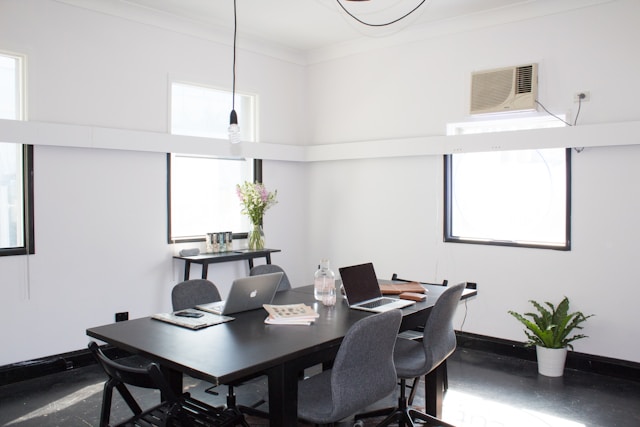Innovation and risk taking are one of the best ways to supercharge the growth of any company. In other words, it is the secret sauce for the success of a business. But the question is how to foster innovation and risk-taking capabilities in any organization. Well, an appropriate workplace surrounding can facilitate it. A correct office design space is a crucial driver in enhancing the outcome and speed of risk-taking and innovational efforts.
How to Foster Innovation and Risk Taking Through Designing Office Space?
A professional Office Interior Designer usually follows the strategies below to create an office space that fosters innovation and risk-taking capabilities.
- Flexible Office Space
To support spontaneity, you have to reconfigure the office spaces. In this way, you can switch between different working modes and share information among the team members without difficulty. Implement a mixture of fixed and fluid architectural aspects, like semi-permanent walls and movable partitions.
There should also be a flexible hub for both small and large types of various activities. To consider the individual preferences of the employees, include mobile furniture. Always use the private enclosed segments in an office for video and audio conferencing and important virtual meetings.
Height-adjustable furniture like desks allows team members to switch between standing and sitting positions, preventing fatigue and promoting movement. Mobile storage solutions decrease clutter and provide convenience.
- Collaborative Office Space
Innovative and risk-taking teams should always have a common understanding. Insights from different individuals should become a group learning lesson. Thus, there should be a common group area for swapping vital information and brainstorming innovative ideas. The office design space should also include maximum individual workstation visibility. So, place the cubicles facing one another but with a little privacy with the help of partition walls.
Enable computer collaborations involving both virtual and co-located team members. Try to include interactive displays that will allow users to actively engage with information, such as trackable and projection surfaces and whiteboards. A well-designed and organized office space decreases stress and improves productivity. Ergonomic furniture can also improve productivity and decrease discomfort.
It is also a good idea to integrate smart furniture in an office design according to user requirements. It will improve work productivity and user comfort as it adjusts itself according to posture. Customized climate control is another vital element that most Office Interior Designers include in their projects. It allows the employees to customize the air quality or temperature.
- Brand and Culture Representative Office Space
The culture and identity of an organization offer meaning and context to the innovators. It can also be a medium to underscore vital processes and values. An Office Interior Designer should uniquely and authentically reinforce culture and tone in the workplace architecture. The design should also display all the achievements and products of the company that will inspire risk taking and pride.
Allow customization by the team members to reflect identification and ownership of their workplaces. Digital signage also represents the brand culture well as it displays critical information like real-time news or data.
- Inspiring Office Space
Employees related to service and product development need engaging and stimulating spaces to sustain and jump-start their creative thinking. Thus, the office design should have maximum views and natural light exposure. You can implement different natural materials and elements throughout the open floor. Also, consider careful usage of paints, as the colors should be soothing and not too dark. All the settings should be formal and comfortable with meaningful artwork and objects.
Groups and individuals in a company require support for different types of work modes for focusing, learning, socializing, and collaborating. So, each square foot, vertically or horizontally, should be efficiently planned to facilitate new and innovative ideas. Vertical surfaces such as walls, freestanding whiteboards, panels, and more should display and organize information to connect various group procedures.
There should be multiple layered storage for keeping the additional office materials and accessories. An innovative office design should also include stored and active working tools that the employees can easily access. Loud and excessive sound can be stressful and distracting. The only solution is to implement sound-absorbing materials and acoustic partitions to reduce the noise level. Smart lighting installations can adjust the office lights depending on the particular time of the day or the work that needs to be done. In a nutshell, create an innovative office space that will have a responsive IT infrastructure.
- Social Office Space
Trust is important when employees are executing intense work. Your office should have separate areas for conversations to create social connections. This is one of the most successful elements for creating innovative and risk-taking spaces. The office design should include separate zones for beverages and foods so that the employees can conveniently access them. Incorporate a comfortable lounge, table, and any other furniture setting for the mingling of the team members. Pay attention to a well-designed, welcoming guest area for a discreet work view.
Final Words
Only a top Office Interior Designer can create a workspace with a beautiful combination of functionality, nature, flexibility, technology, and personalization. These elements will help build an environment that supports daily tasks and fosters collaboration, risk-taking efforts, well-being, and innovation.






